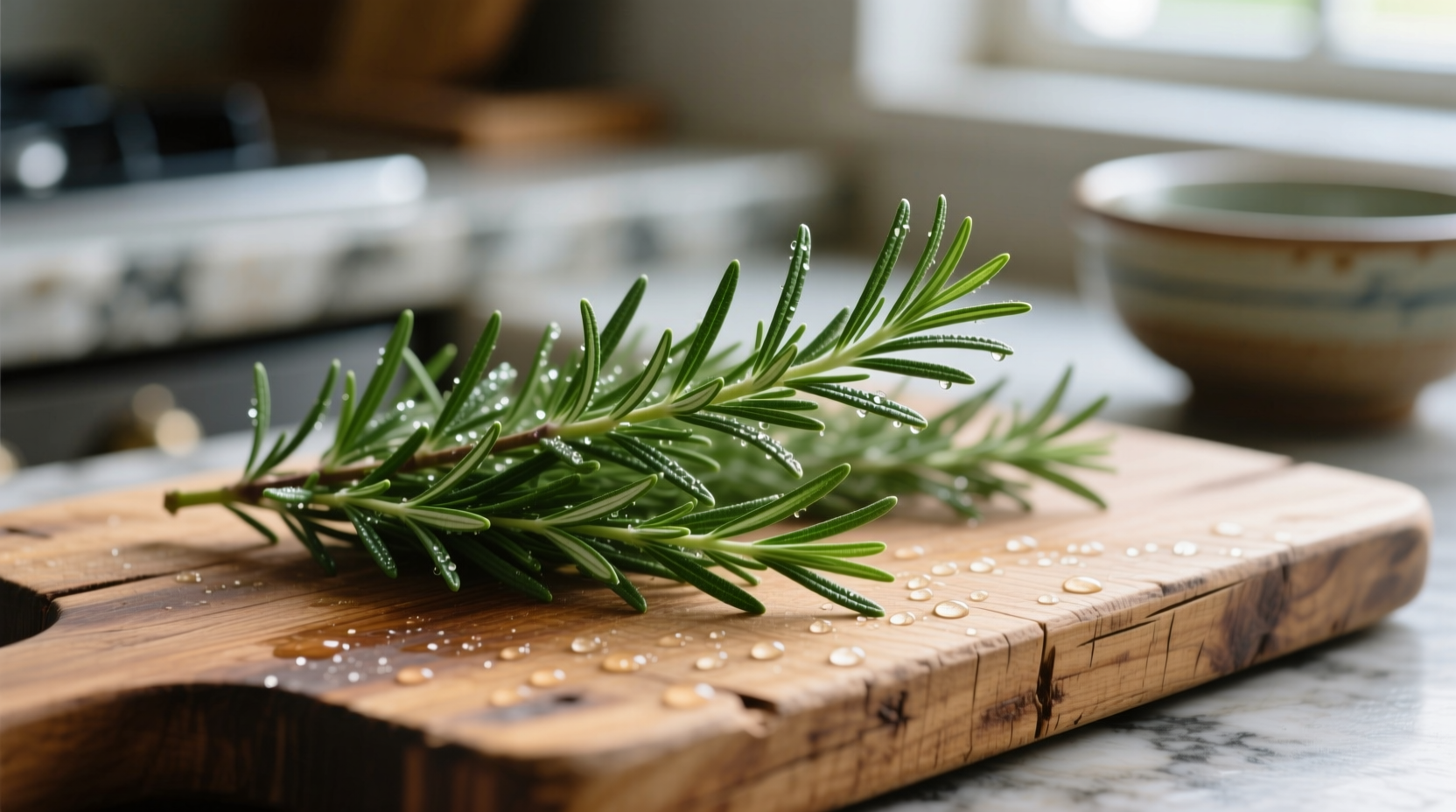The Complex Flavor Profile of Rosemary
Understanding what does rosemary taste like requires examining its multi-dimensional flavor profile. This Mediterranean herb delivers a unique sensory experience that sets it apart from other culinary herbs. The dominant characteristic is a pine-like aroma reminiscent of forest air, followed by warm woody notes that provide depth. Underneath these primary flavors lie subtle citrus undertones—particularly lemon—that brighten the overall profile.
When you crush a fresh rosemary sprig between your fingers, you'll notice an additional layer: a faint medicinal quality from its camphor content. This isn't overpowering in culinary applications but contributes to rosemary's distinctive character. The herb finishes with a mild peppery note that lingers on the palate, making it particularly effective in dishes where you want flavor to persist.
| Flavor Component | Intensity (Fresh) | Intensity (Dried) | Common Pairings |
|---|---|---|---|
| Pine/Woody | ★★★☆☆ | ★★★★☆ | Lamb, game meats, root vegetables |
| Citrus (Lemon) | ★★☆☆☆ | ★☆☆☆☆ | Chicken, fish, lemon-based sauces |
| Peppery | ★☆☆☆☆ | ★★☆☆☆ | Bean dishes, hearty stews |
| Camphor/Medicinal | ★☆☆☆☆ | ★★☆☆☆ | Infused oils, herbal remedies |
Fresh vs. Dried: How Form Transforms Flavor
When exploring what does rosemary taste like in different forms, the transformation from fresh to dried creates significant flavor changes. Fresh rosemary contains higher levels of volatile compounds like 1,8-cineole and α-pinene that deliver bright, aromatic notes. These compounds partially evaporate during the drying process, resulting in a more concentrated but less complex flavor profile.
According to research published in the Journal of Agricultural and Food Chemistry, dried rosemary shows a 30-40% reduction in certain volatile compounds while concentrating others like camphor. This explains why dried rosemary tastes more earthy and less citrus-forward than its fresh counterpart. When substituting one form for another, remember that dried rosemary is more potent—use about one-third the amount of dried rosemary compared to fresh.

Why Rosemary Pairs Perfectly with Certain Foods
The science behind what does rosemary taste like reveals why it complements specific ingredients so well. Rosemary's woody compounds interact favorably with the fat molecules in meats, particularly lamb and pork. When these fats render during cooking, they absorb and distribute rosemary's aromatic compounds throughout the dish.
Chefs often use rosemary with root vegetables because its pine-like notes echo the earthy flavors naturally present in potatoes, carrots, and parsnips. The herb's subtle citrus undertones also cut through richness, making it ideal for fatty cuts of meat. However, exercise caution with delicate fish or light vegetables—rosemary's robust flavor can easily overwhelm more subtle ingredients.
Practical Tips for Using Rosemary Effectively
Mastering how to use rosemary begins with understanding its intensity boundaries. Always start with less than you think you need—whole sprigs can be added during cooking and removed before serving, while finely chopped rosemary distributes flavor more evenly. For maximum flavor extraction:
- Dry toast dried rosemary in a pan before use to awaken dormant flavor compounds
- Infuse rosemary in olive oil at low temperature for 20-30 minutes for subtle flavor
- Combine with garlic and olive oil as a base for marinades and rubs
- Add early in cooking for soups and stews to allow flavors to meld
Consider the cooking method when determining what does rosemary taste like in your final dish. High-heat roasting caramelizes rosemary's natural sugars, creating deeper, more complex flavors. Conversely, adding rosemary late in the cooking process preserves its brighter, more volatile notes.
When Rosemary Might Not Be Right for Your Dish
Understanding rosemary's flavor limitations is as important as knowing its strengths. This herb's robust profile creates context boundaries where it may not perform well:
- Delicate seafood like sole or flounder can be overwhelmed by rosemary's intensity
- Cream-based sauces often clash with rosemary's woody notes
- Sweet applications beyond certain fruit compotes may create unbalanced flavors
- Quick-cooking vegetables like asparagus can become bitter with rosemary
When substituting rosemary, consider thyme for a milder earthy note, or a combination of sage and marjoram to approximate its complex profile. Remember that no single herb perfectly replicates what does rosemary taste like, as its flavor signature is uniquely Mediterranean.
Frequently Asked Questions
Does rosemary taste bitter?
Rosemary can taste slightly bitter when used excessively or when stems are included in cooking. The leaves themselves have a pleasant pine-like flavor, but the woody stems contain higher concentrations of bitter compounds. Always strip leaves from stems before use and start with small amounts to avoid bitterness.
Why does rosemary taste like pine needles?
Rosemary shares chemical compounds with pine trees, particularly α-pinene, which creates that characteristic pine-like aroma. This is why many people describe what does rosemary taste like as having forest-like qualities. The similarity comes from shared terpene compounds that evolved as natural defense mechanisms in both plants.
How much rosemary should I use in cooking?
For most dishes serving 4-6 people, start with 1-2 teaspoons of finely chopped fresh rosemary or 1/2-1 teaspoon of dried rosemary. Remember that dried rosemary is more concentrated—use about one-third the amount of dried compared to fresh. Add rosemary early in cooking for soups and stews, but later for delicate dishes to preserve its brighter notes.
Can you eat raw rosemary?
Yes, you can eat raw rosemary, though its strong flavor and tough texture make it best used sparingly in raw applications. Finely minced fresh rosemary works well in salad dressings, compound butters, or sprinkled over bruschetta. The raw herb delivers the brightest citrus notes but can be quite intense, so use small amounts and chop thoroughly for best results.











 浙公网安备
33010002000092号
浙公网安备
33010002000092号 浙B2-20120091-4
浙B2-20120091-4